Museum of Tomorrow by Santiago Calatrava opens in Rio de Janeiro
Spanish architect Santiago Calatrava's science museum with a skeletal roof that projects over a public plaza has opened in Rio de Janeiro (+ slideshow).
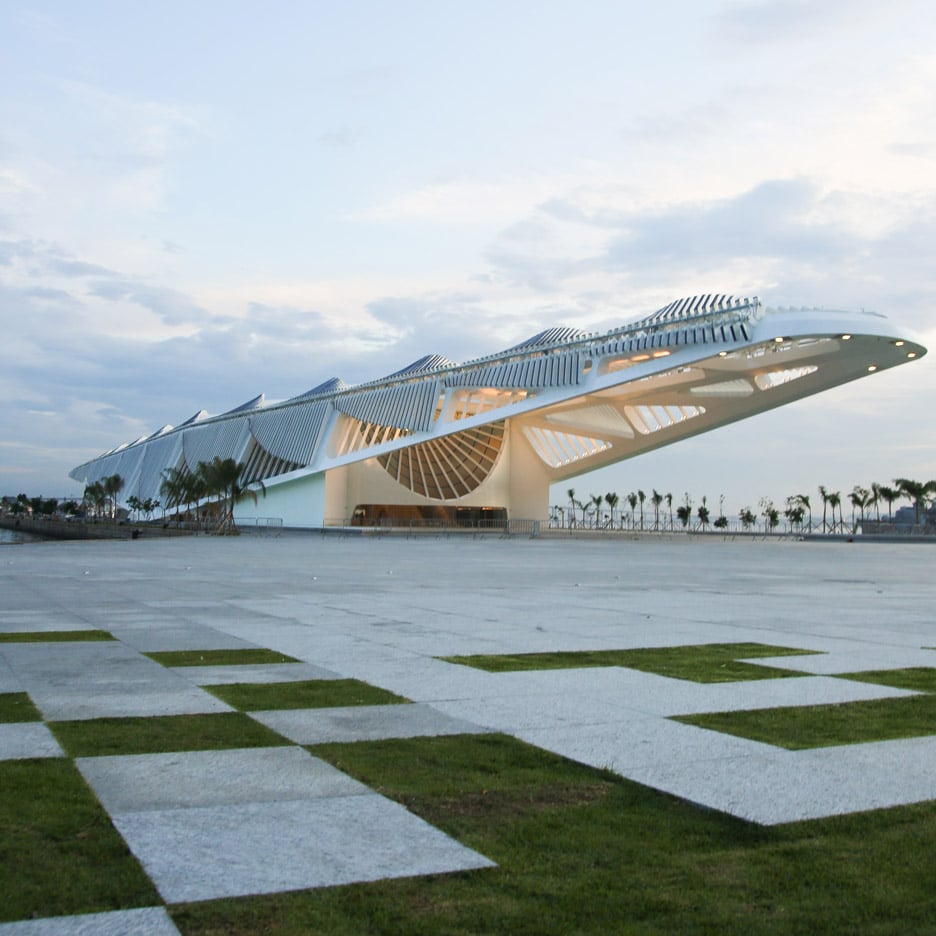
Called the Museum of Tomorrow, the museum holds 5,000 square metres (53,819 square feet) of exhibition space surrounded by a 7,600-square-metre (81,805 square feet) plaza on Guanabara Bay.
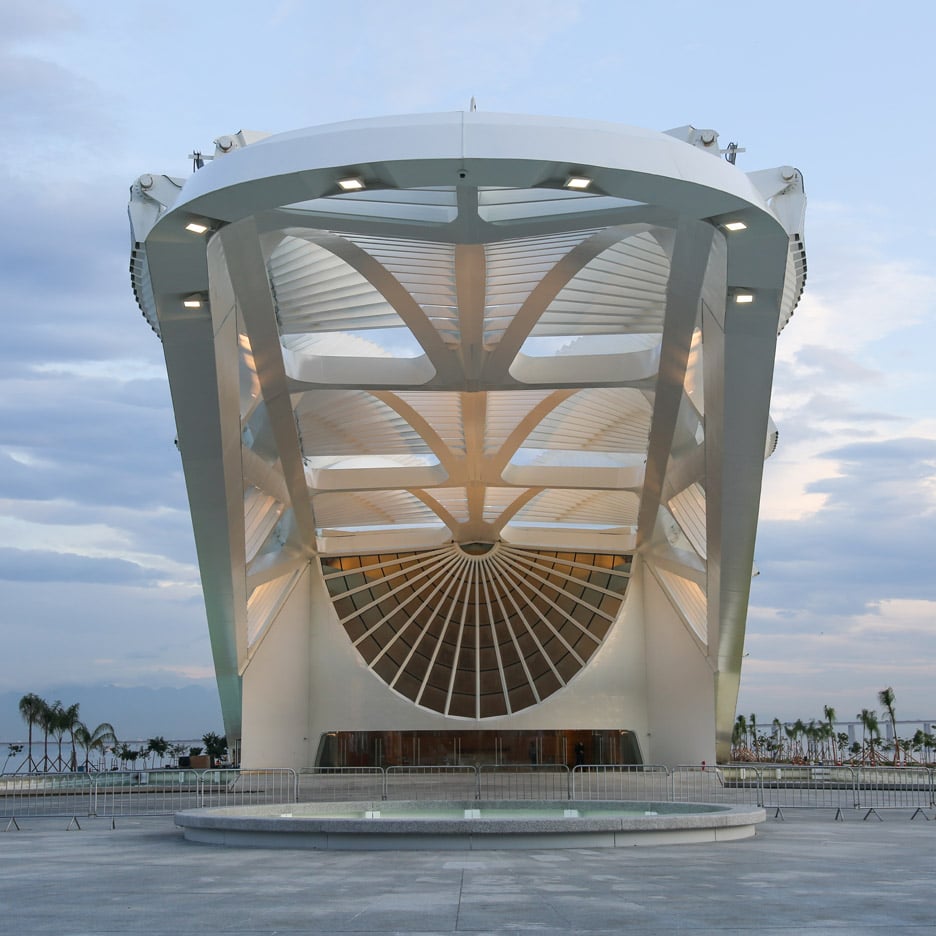
The project is part of a larger revitalisation of the Porto Maravilha neighbourhood near the bay.
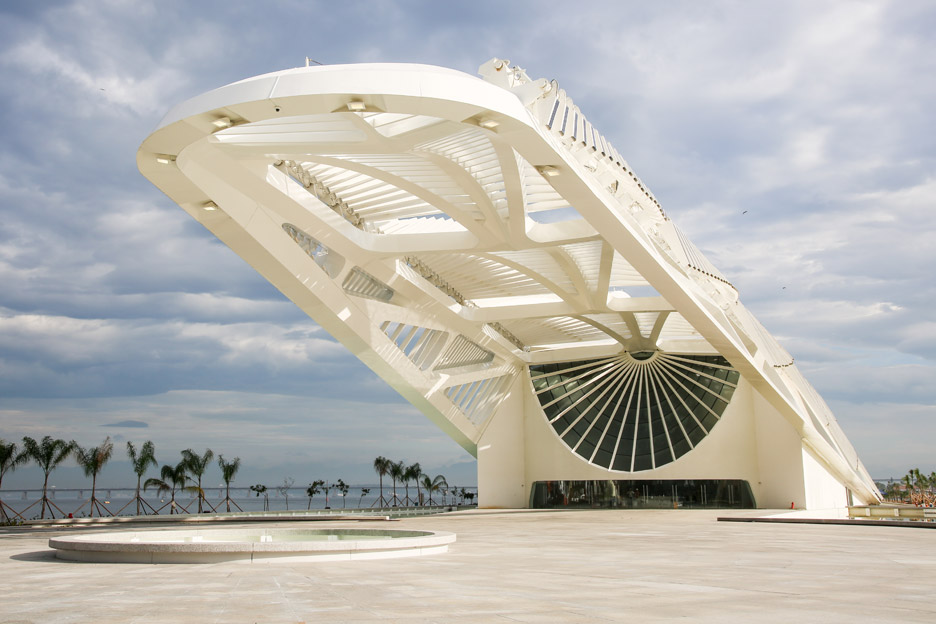
"The city of Rio de Janeiro is setting an example to the world of how to recover quality urban spaces through drastic intervention and the creation of cultural facilities such as the Museum of Tomorrow," said Calatrava.
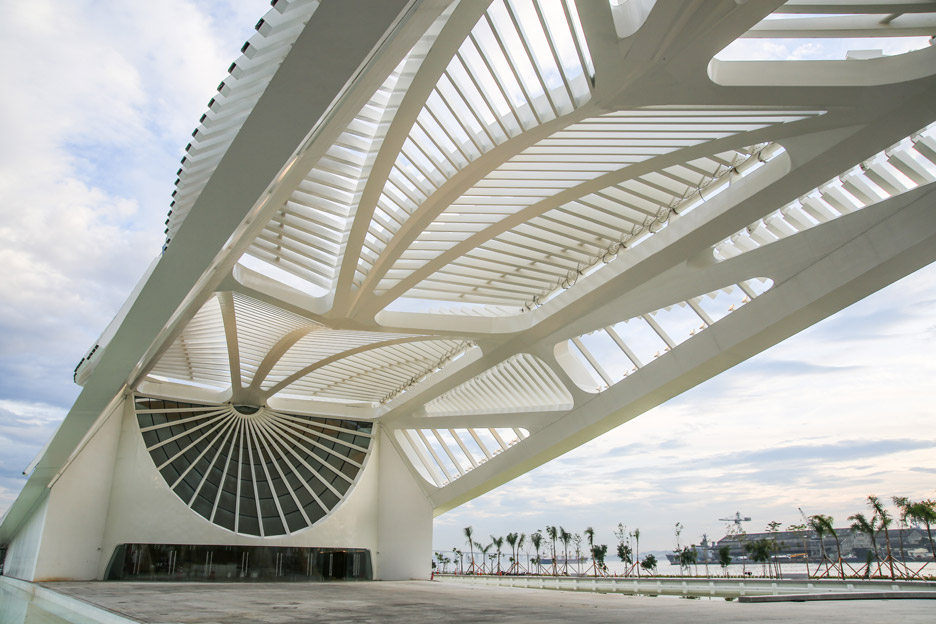
"This vision led us, in our first designs, to propose the addition of a plaza outside the museum," the architect added. "The plaza creates a more cohesive urban space and reflects the neighbourhood's greater transformation."
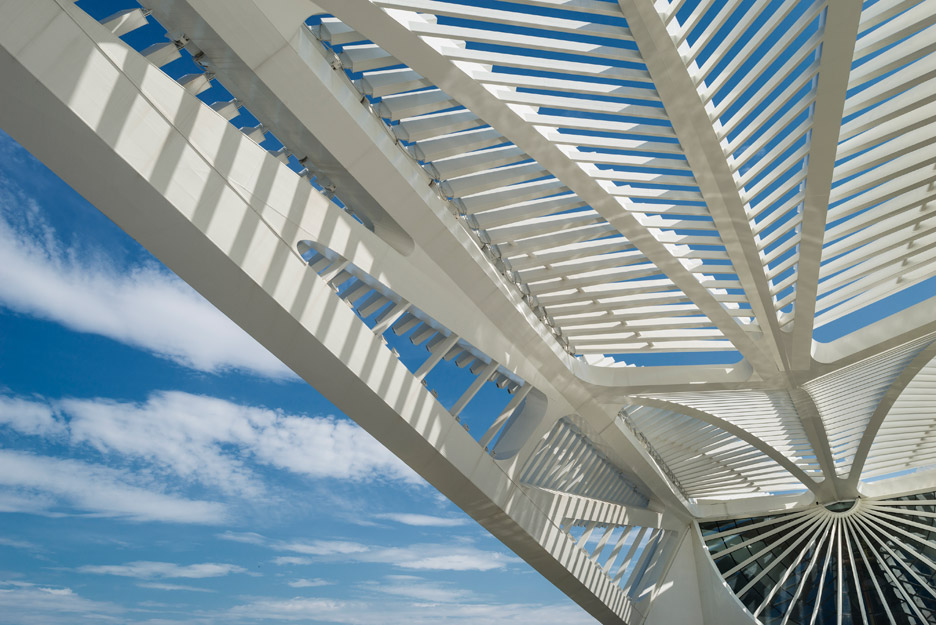
Burle Marx Studio designed the grounds, which include native planting surrounding the large paved piazza.
The building is oriented along the north-south axis, perpendicular to the bay. This highlights the horizontal of the design, which includes a massive trussed roof capped with solar panels that move to follow the position of the sun.
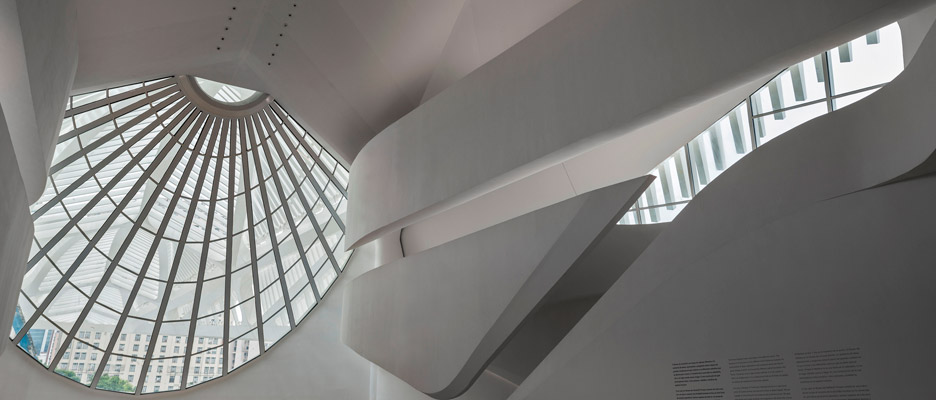
The roof is supported by curving white ribs. A half circle-shaped window tops the entrance.
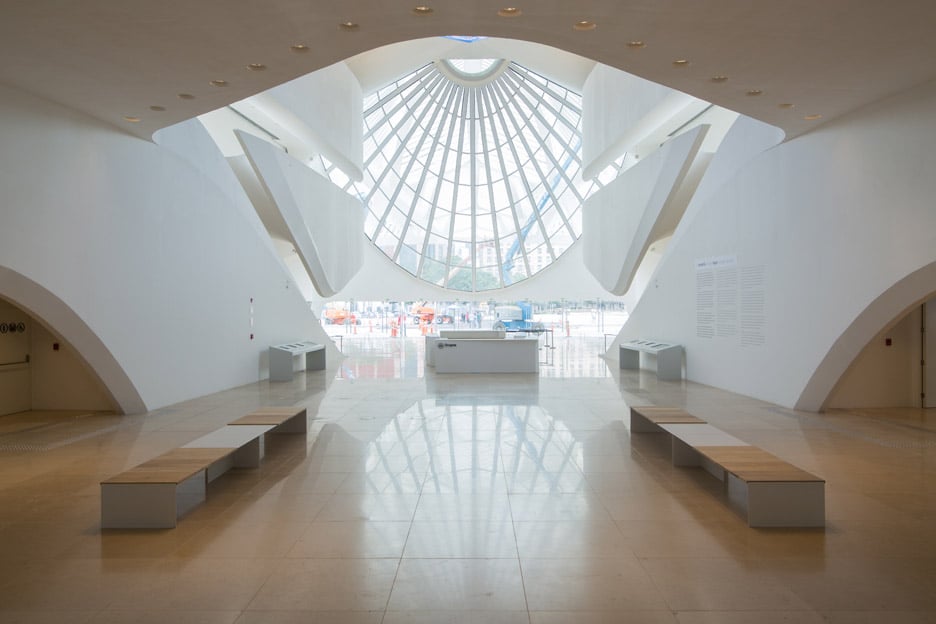
Water from the bay is used to cool the building and feed the large reflecting pools on both ends of the museum. The water is then returned back into the sea.
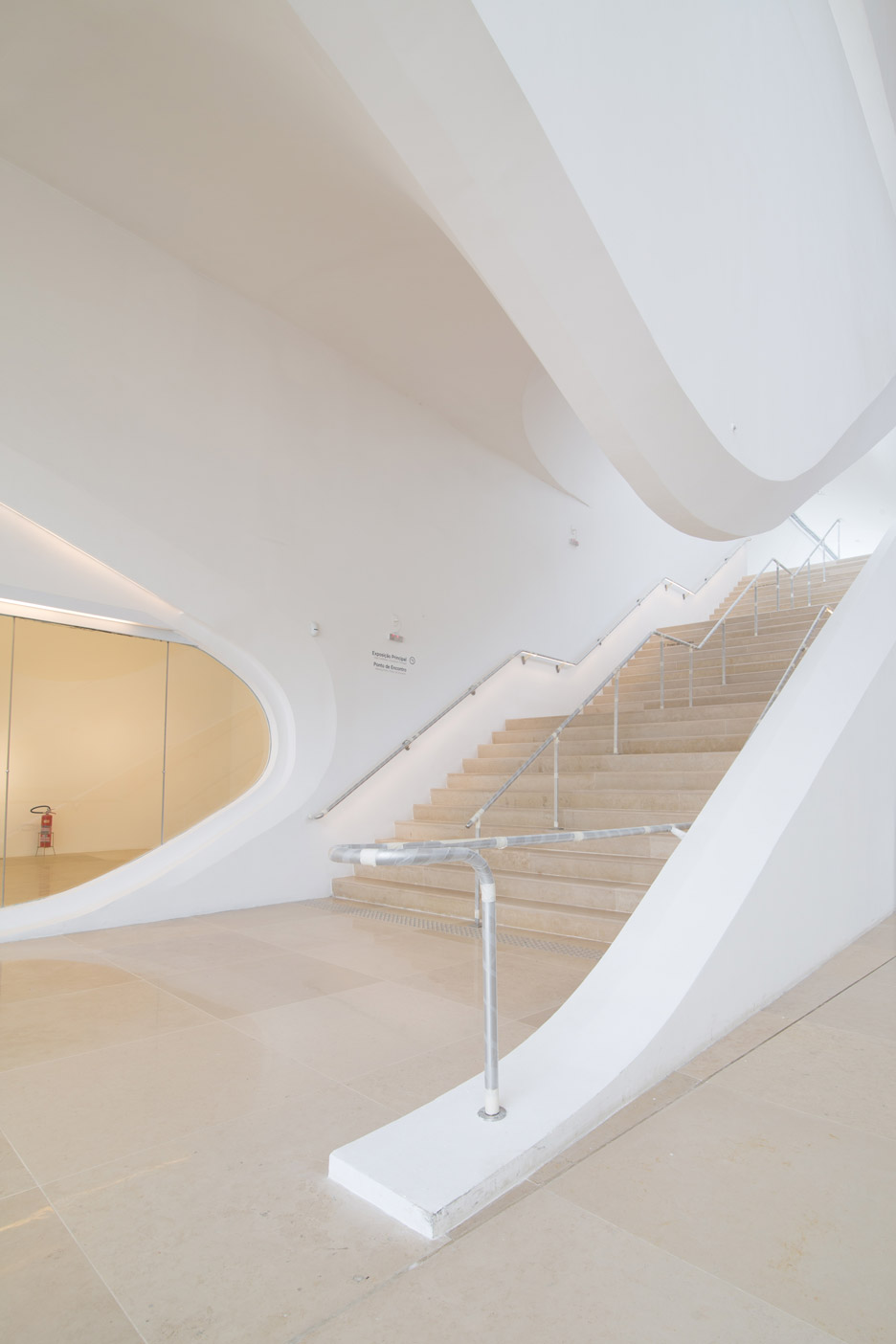
Inside, the museum includes temporary and permanent exhibition areas, a 400-seat auditorium, an education centre, cafe and gift shop.
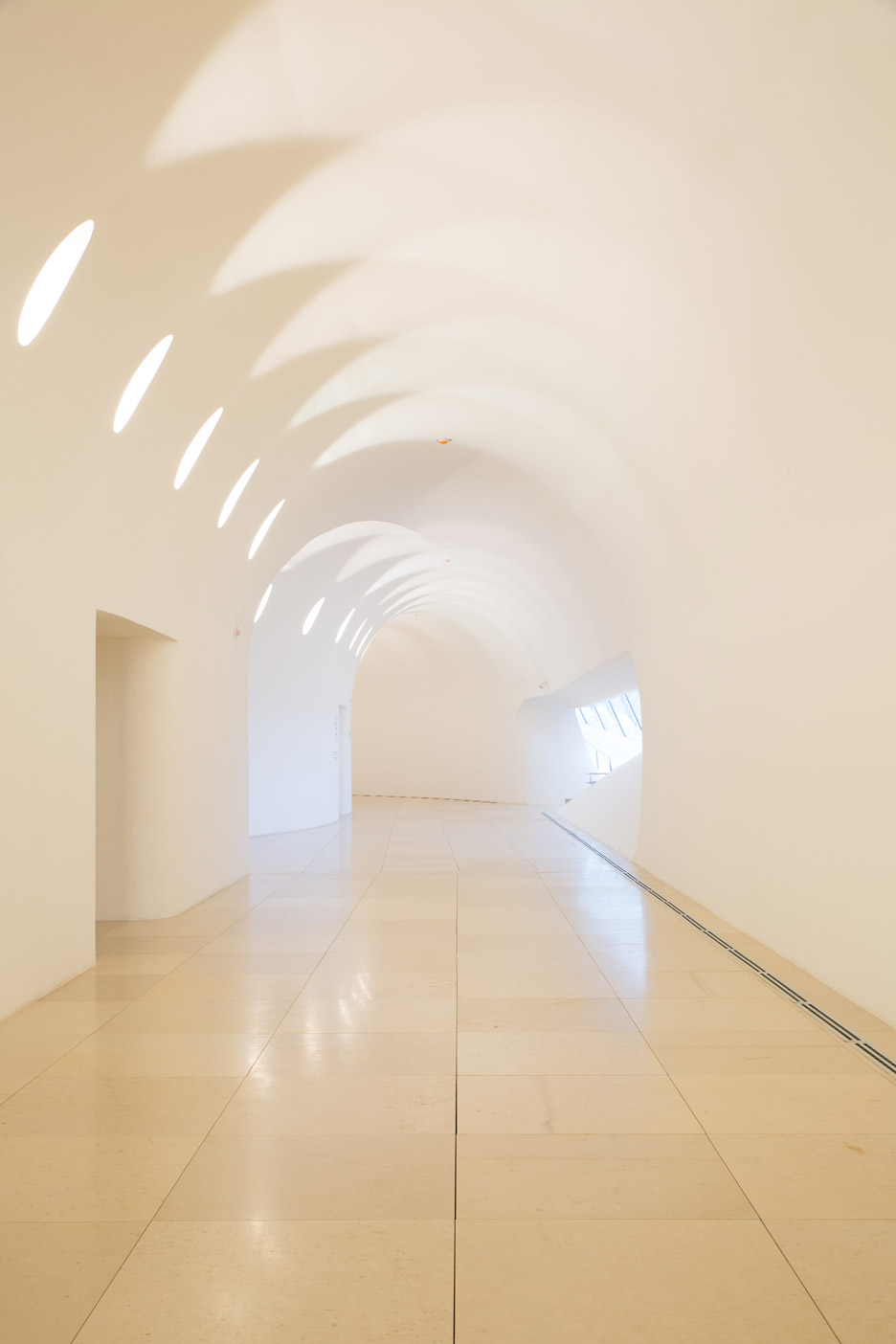
The all-white interior has curving walls, staircases, and ceilings. Many of the displays, created by US-based exhibition designer Ralph Appelbaum, are freestanding.
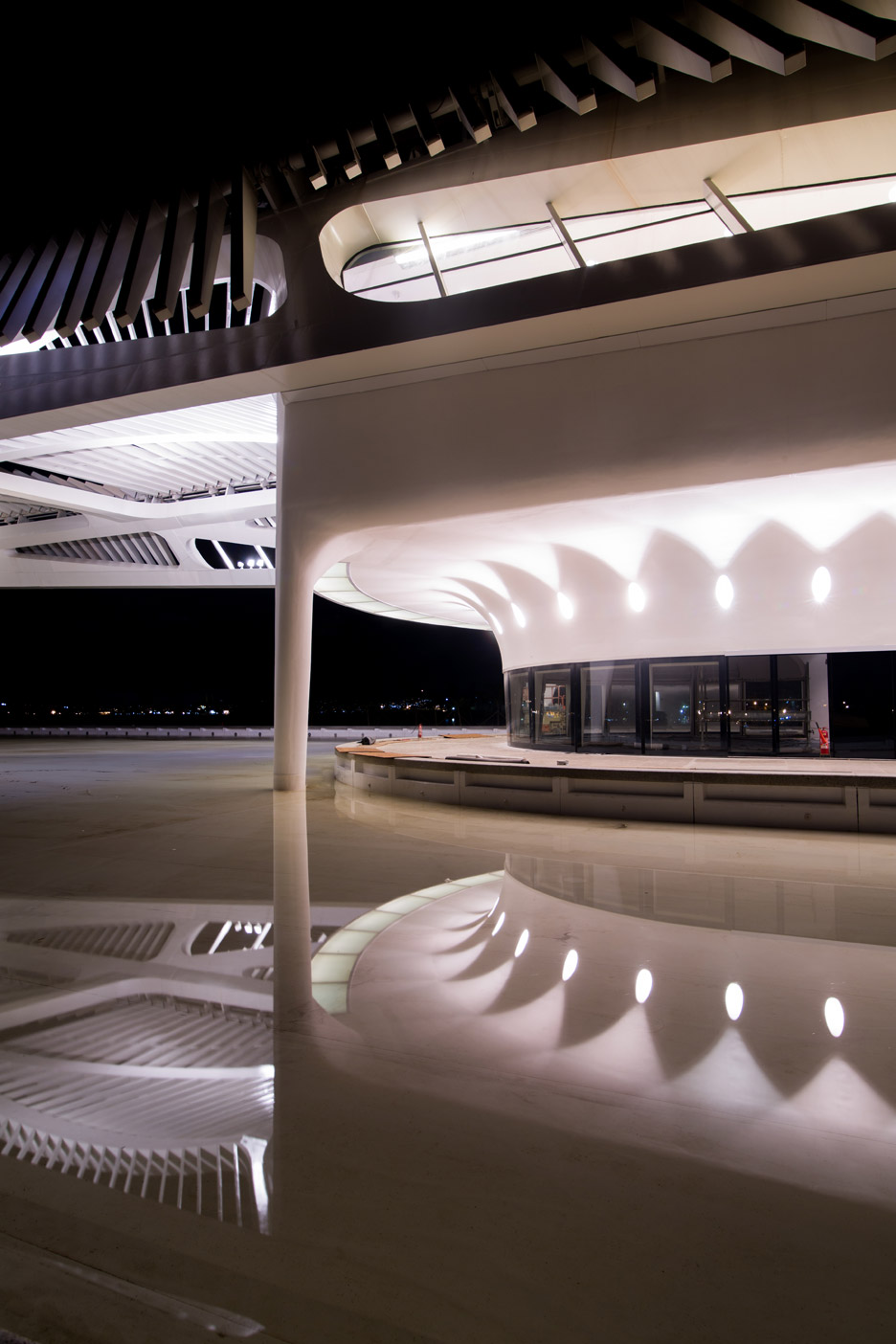
The museum will explore topics such as climate change and population growth, changes in biodiversity, genetic engineering and bioethics, and new advances in technology.
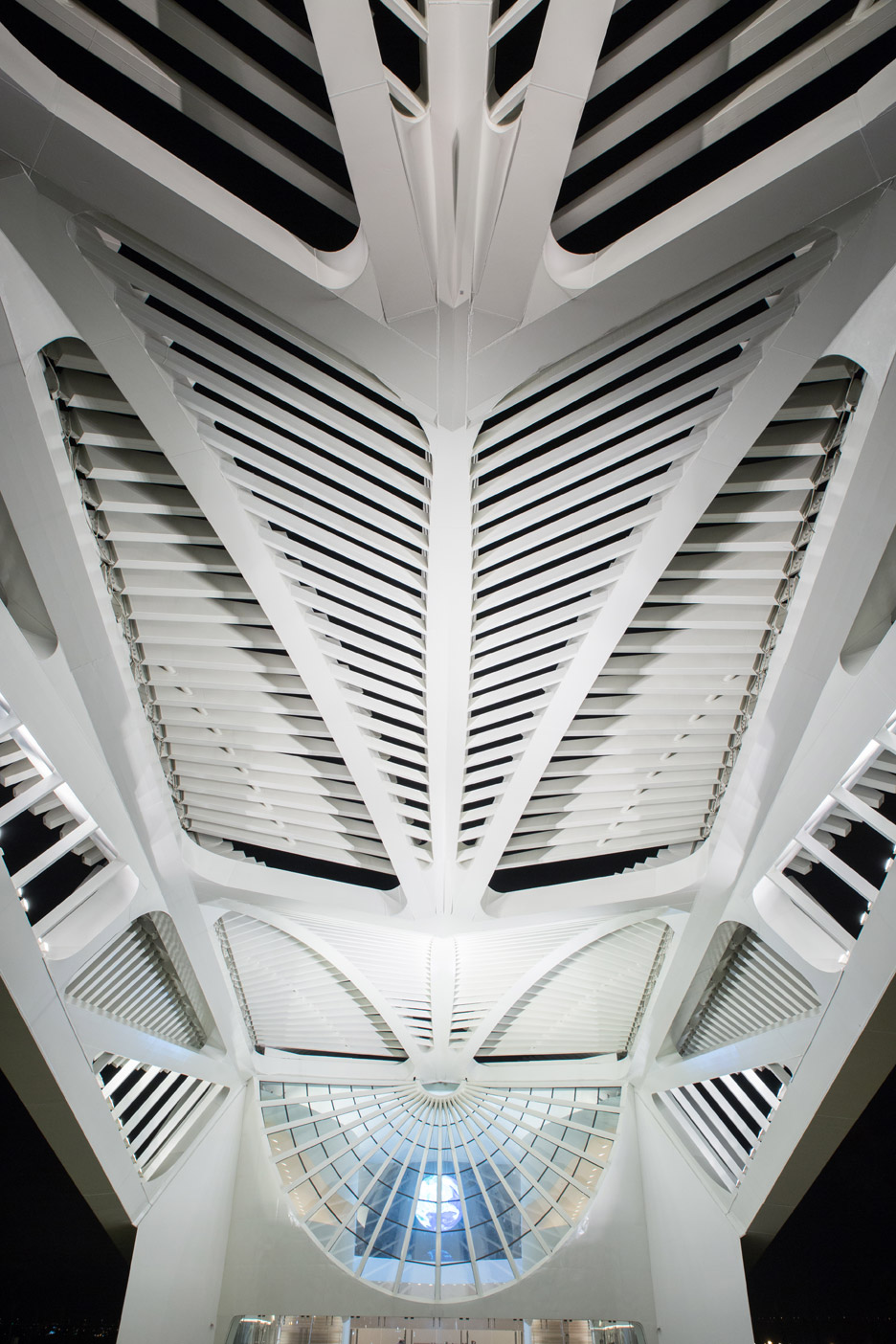
The project was funded the City of Rio de Janeiro, the Roberto Marinho Foundation, Banco Santander, BG Project, and the government of Brazil. Rio is gearing up to host the 2016 Olympic Summer games, which will largely take place in 15 sports venues on a lagoon-side peninsula masterplanned by AECOM.
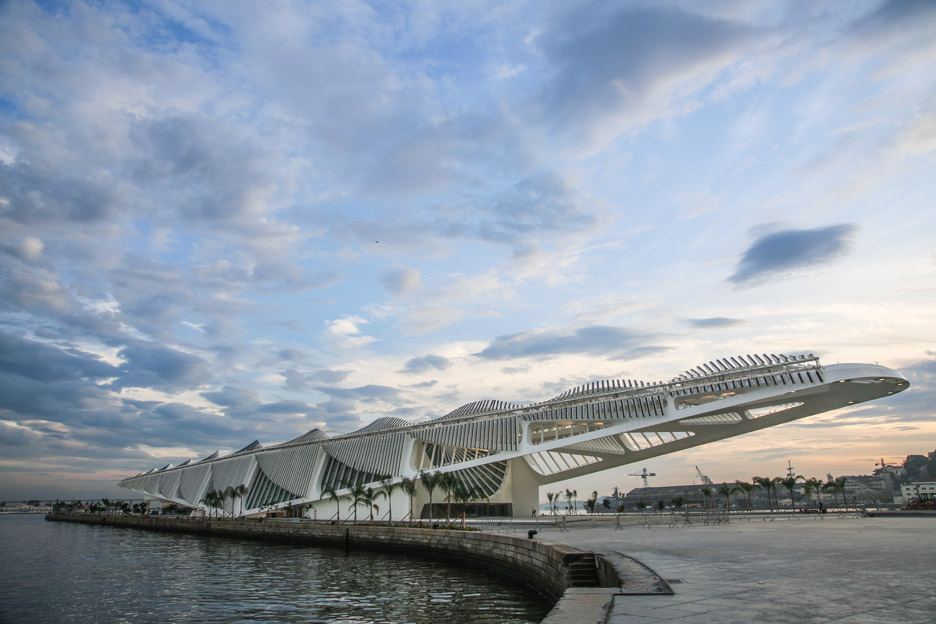
Calatrava recently unveiled designs for a trio of bridges in the Chinese city of Huashan. He is also working on a transit hub and a Greek Orthodox church at the World Trade Center site.